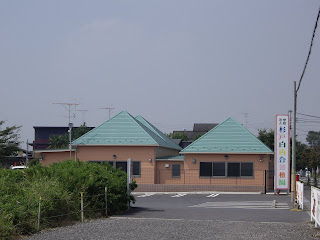
The annual 'Zenkoku Wadokai Taikai' (National Wadokai Championships) were held August 25 & 26. At the front is Shiramizu's Takamasa Arakawa Sensei leading the large group warm-up during the opening ceremonies for the finals on Sunday.


The eliminations were held at the Urayasu Park Gymnasium near Tokyo Disneyland, and then bascially the best 16 and up for each division were held at the impressive Nippon Budokan (see picture above), just north of the Emperor's palace.

Lawrence and myself beside the main banner at the door. Lawrence couldn't compete because he came to Japan after the registration deadline, and I had to coach practice at my high school (Seiritsu) on Saturday when the eliminations took place, therefore, we ended up just cheering everyone on.
Shiramizu did very well with 53 members competing. I don't know all the results yet, but many Shiramizu members placed in the medals. Mrs. Yoshiwara, one of the two part-time female instructors in the dojo along with Mrs. Yamazaki, won the women's over 40 kata division. Mrs. Yamazaki has won it twice before as well!
Since the divisions at the Nationals are only divided up by age and sex, normally a dojo sends their best members, but the quality does swing from beginners to regular JKF national team athletes. Due to the Asian Karatedo Championships being held on the same weekend in Malaysia, some national team members who belong to the Wadokai were not present.

Arakawa Sensei's youngest son Masatoshi won the elementary grade 1 kumite division in the most spirited fashion! I think he was on an icy sugar high having taken two huge bites out of my ice cream just prior to going onto victory! Although the Budokan is air-conditioned, it was 35 degrees outside, so gotta keep cool somehow! Below Ma-chan is landing a nice jodan punch!

In the men's kata division, 2005 Wadokai World Cup champion Takuya Furuhashi from Aichi prefecture won for the 6th time! Sometime later this week I will upload his several kata onto my account on YouTube.
The only foreigner competing was Maja from Germany, who's at the International Budo University doing her master's in budo. She made it to best 16 in women's kumite. Seems she needed to hit a little harder for the official's to award her points...

Maya, Lawrence and myself at the main entrance for the Budokan.

Arakawa Sensei and Koji Okumachi Sensei did a yakusoku kumite demo, with Arakawa Sensei attacking, the final few times with a short knife.

This was followed by a 5min performance by the Tokyo Rosy Cheerleaders, an elementary and junior high school student group just back from some competition in the US (cheerleading groups have become very popular in Japan). Lots of leaping and waving big Mickey Mouse glove hands, and surprisingly a big crowd pleaser, everyone clapping along. Japanese just love anything cute...
Meiji University Karate Club's Men's Kumite Team beat Guseikai Takagi Sensei's Dojo Kumite Team 3-1 in the first 4 matches of a best in 5 in the men's team kumite final, so Arakawa Sensei being the anchor for the Guseikai team never got to fight in the final match.

Several moms cheering from above the Shiramizu team cloth banner. Every club brings a banner to hang up at every karate tournament.

End of the day picture with Takagi Sensei. If you're not in the picture, you weren't there! (But I was, cause I was taking the picture!)

Everyone from Shiramizu who placed top 8 or better got a certificate of achievement listing their result, plus a medal for the best 4 and trophy for the division winners.
When I know all the Shiramizu results, I'll post them later.
Richard

























